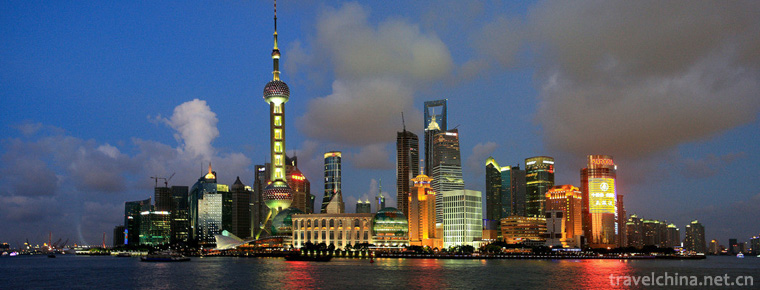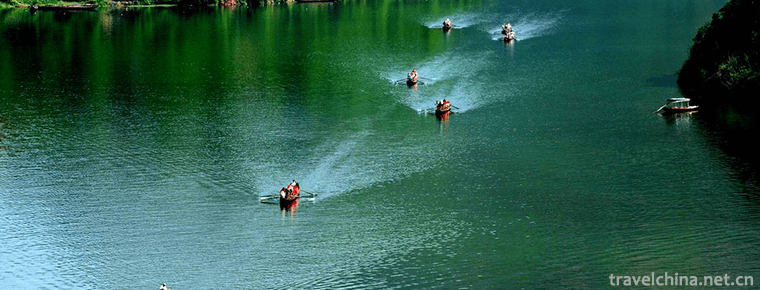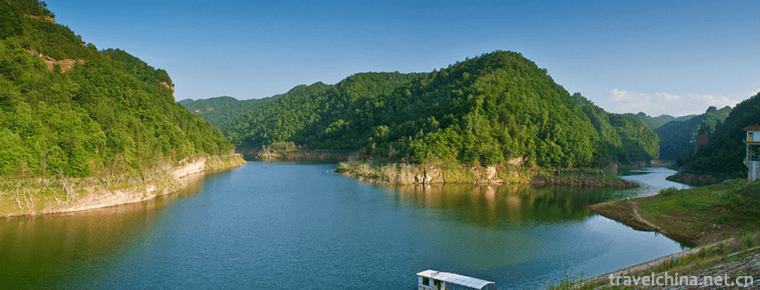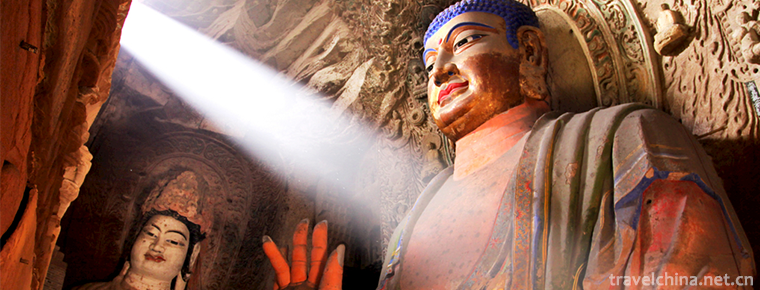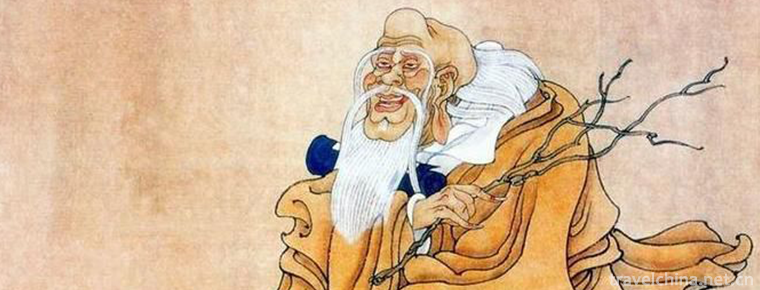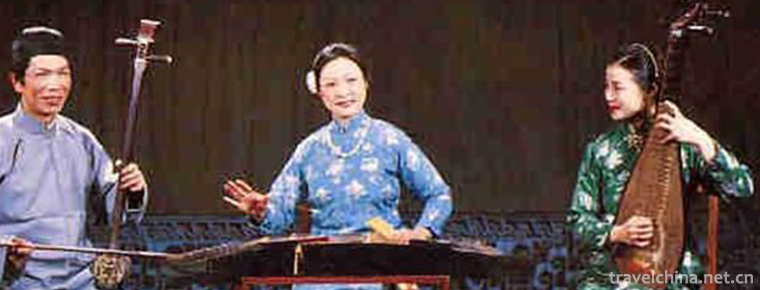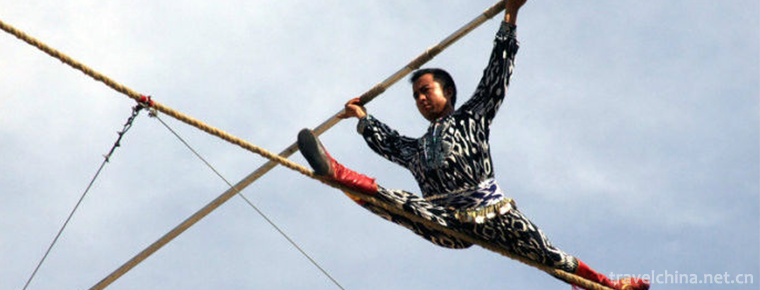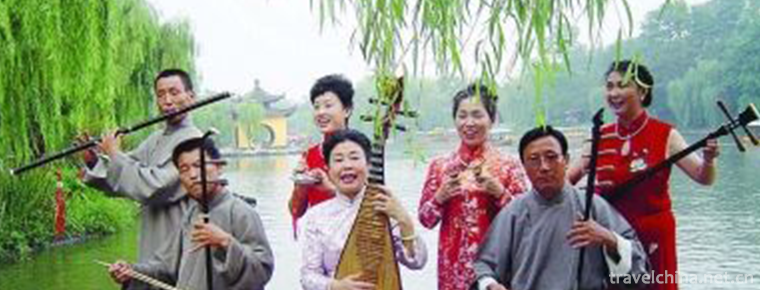Jiaohe ruins
Jiaohe Old Town is the oldest and most well-preserved native building city in the world. It is also the most complete urban relic preserved in China for more than two thousand years. The Anxi Capital Protectorate, the highest military and political organization in the Western Tang Dynasty, was first located in Jiaohe Old Town. In 1961, it was listed as a national key cultural relic protection unit.
On June 22, 2014, at the 38th UNESCO World Heritage Committee meeting in Doha, Qatar, Jiaohe Old Town was successfully included in the World Heritage List as a site of the Silk Road: Road Network of Chang'an-Tianshan Corridor, which was jointly applied for by China, Kazakhstan and Kyrgyzstan.
Historical development
Jiaohe Old Town was founded and built by Cheshiren from the 2nd to 5th centuries B.C. and reached its peak in the Southern and Northern Dynasties and the Tang Dynasty. From the 9th to 14th centuries, Jiaohe City declined due to successive wars. During the period of Chahetai at the end of Yuan Dynasty, there were successive wars in Turpan. Jiaohe City was badly damaged and finally abandoned. In the 14th century, after years of brutal war, the rebels such as Haidu, a Mongolian aristocrat, successively attacked Gaochang and crossed the river. At the same time, Mongolian rulers forced local residents to abandon traditional Buddhist beliefs and convert to Islam. Under the double blow of spirit and material, Jiaohe finally completed its life course.
geographical position
An island platform 13 kilometers west of Turpan. Because the river flows around the city, it is called Jiaohe, which was the capital of Cheshi Qianguo, one of the 36 countries in the Western Regions.
Jiaohe City Site is located in Yar Township, about 13 kilometers west of Turpan City, and on the Loess platform 30 meters high at the intersection of Yarnaizigou and Yarnaizigou, 10 kilometers west suburb of Turpan City. It is about 1650 meters long, narrow at both ends, and about 300 meters wide at the middle. It is a willow-shaped peninsula. This is the former capital city of Cheshi, one of the 36 cities in the ancient Western Regions. It is the political, economic, military and cultural center of the country. The drought and lack of rain in Turpan made the old city well preserved. All the buildings were made of rammed earth, and the shape and layout were similar to that of Chang'an City in the Tang Dynasty. Mud Bodhisattvas can also be found in city wells, government offices, Buddhist temples, pagodas, streets and alleys, as well as workshops, folk houses, military arenas, Tibetan military trenches, temples and Buddhist shrines. The monastery covers an area of 5,000 square meters and has a suction well. There are 101 pagodas in the group. Looking down from the sky, Jiaohe Old Town looks like a big willow leaf.
architectural composition
After thousands of years of vicissitudes, the main structure of Jiaohe Old City's architectural layout is still miraculously preserved. All these are due to Turpan's unique dry and rainless climate. The scale of Jiaohe Old Town is generally Tang Dynasty architecture, and the buildings are mainly concentrated in the southeastern part of the platform within a range of about 1000 meters. The ancient city is surrounded by cliffs, and three gates are built on the cliffs on the east, West and South sides.
The architectural layout of Jiaohe Old Town is mainly composed of three obvious parts: a central road running through the north and South divides the residential area into East and West parts. The northern end of the main road is a large-scale temple, which constitutes the northern monastery area with a construction area of about 90,000 square meters. The buildings are mostly rectangular courtyards with the courtyard doors facing the streets. From the layout of each courtyard, it should be a monastery, because there is a square earth pillar in the main room, which should be a shrine or tower pillar.
The southern part of the eastern part of the Avenue is a large residential area with a construction area of about 78,000 square meters, the northern part is a small residential area, and the central part is an official district. In addition to most of the residential areas, the western part of the Avenue also distributes many handicraft workshops. The City Avenue is lined with thick Street walls without doors and windows. Roughly, the vertically intersecting, vertically and horizontally connected streets and lanes in the north-south, East-West directions divide the 360,000 square meters of buildings into several sub-districts, which are quite similar to the fangs and tunes of ancient cities in the mainland of China. This architectural layout is enough to show that Jiaohe Old Town was reconstructed in a planned way in the Tang Dynasty, but the traces of the old city before the Tang Dynasty were totally different. From the point of view of urban layout, on the one hand, he was influenced by the traditional urban building regulations in the Central Plains, and has unique local characteristics. Traffic networks, gates and other buildings with streets and lanes as their skeleton all take military defense as their guiding ideology in building. Renovating the ancient city is a huge military fortress, reflecting the fierce national and social contradictions in this area in history.
It is also incredible that apart from the absence of walls, there is also a distinct feature of the architectural form, that is, most of the buildings in the whole city, regardless of size, are basically excavated from the high terrace face down by the method of "reducing ground and retaining walls". The walls of monasteries, government offices, city gates and houses are basically earth walls, especially streets and lanes. They are long and deep, like winding trenches. It can be said that this city is a huge ancient sculpture, its unique architectural technology, not only in China, but also in foreign countries, which reflects the wisdom and creativity of ancient workers.
Protection of cultural relics
The site of the ancient city is well preserved. It is about 1750 meters long in North and South and 300 meters wide in East and west. It is divided into monasteries, residential buildings and government offices. The total area of the ancient city is 470,000 square meters, and the existing architectural relics are 360,000 square meters. Most of the buildings in the city were built in the Tang Dynasty, with unique architectural layout. The city retains the architectural characteristics of the Central Plains before the Song Dynasty.
The whole city is like a fortified fortress layers by layers. Outside the pedestrian wall, it seems to be in a deep ditch, unable to see the situation in the city wall. Within the wall, it can stay high and control the internal and external trends. The fortification in the city is also very tight. The layout of Jiaohe Old Town is roughly divided into three parts: a north-south Avenue about 350 meters long and 10 meters wide, which divides the residential area into two parts: East and west. At the north end of the Avenue, there is a large-scale monastery, which forms the northern monastery area with it as the center. There is also a group of magnificent towers on the north of the city, which may be the pagodas for the burial of ancient monks. In the southeast, there is a magnificent underground house, with a 11-meter square patio on the top, and a South Road on the east side of the patio. It has four gates and a patio ground. It has a 3-meter wide and 2-meter high tunnel, 60 meters long, which connects with the North-South Avenue. According to the investigation, it is presumed that the residence of Anxi Du Hufu may be followed by the official Yamen of Tianshan County.
There are many handicraft workshops in the west. On both sides of the main road are thick terraces, behind which are "fangs" separated by crisscrossing short lanes, which are not open to the street. There are residential sites and handicraft workshops such as textile, wine-making and shoemaking. On the east side are military barracks and residences. Jiaohe City has only two gates, the East Gate and the South Gate. Because the city is built on a cliff 30 meters high, there is no need to build a city wall, and the city gate is also an informal building. The South Gate was the main passageway for the transportation of military supplies, grain and grass, and for the entry and exit of the army in ancient times. South Gate is a dangerous terrain. There are cliffs of "one person guards a pass, ten thousand people do not move towards it". The east gate stands tall on a 30-meter cliff, mainly as a gateway to draw river water for the residents of the city.
In 1961, the State Council promulgated it as a national key cultural relics protection unit. It is known as "the most perfect ruins in the world".
historical value
Many cultural relics have been unearthed in Jiaohe Old City, such as lotus tiles and lotus scriptures in Tang Dynasty. Recently, archaeologists found for the first time an underground monastery and a noble Tomb of Cheshiguo in the conservation excavation of the old city, and unearthed a number of precious cultural relics such as Haizhu and Sarizi.
Traffic information
Take bus No. 1 and No. 101 to Yar Township on Xincheng Road, Turpan. Taxis (about 20 yuan/car) can reach Jiaohe Old Town.





-
Lujiazui
Lujiazui is located on the Huangpu River in Pudong New Area, Shanghai.
Views: 173 Time 2018-10-12 -
Sanyoudong Scenic Area
The Three Tours Cave Scenic Area is located outside Xiling Gorge, about 10 kilometers away from Yichang. There are two allusions to the name of Sanyou Cave. The Tang poets Bai Juyi, Bai Xingjian.
Views: 137 Time 2018-12-19 -
Yunya Temple Scenic Area
Yunya Temple Scenic Area is a comprehensive scenic area, which is represented by the unique Danxia landform on the Loess Plateau, and is composed of abundant forest resources.
Views: 138 Time 2018-12-22 -
Yeliguan Scenic Area
Yeliguan Scenic Area is located in Lintan County, with Yeliguan of Lintan County as the center. It is divided into four scenic areas: Lianhuashan, Xixia, Dongxia and Yehai Lake..
Views: 155 Time 2018-12-26 -
Binxian Dafo Temple Grottoes
Binxian Dafo Temple Grottoes, located at the foot of Qingliang Mountain, 10 kilometers west of Binxian City, Xianyang City, Shaanxi Province, is the largest Grottoes group in Shaanxi Province and an i.
Views: 124 Time 2019-01-03 -
Langzhong Tiangong Courtyard Fengshui Cultural Scenic Area
Tiangongyuan Fengshui Cultural Scenic Area is located in Tiangong Township, southwest of Langzhong City, 29 kilometers away from the urban area, covering an area of more than 10 square kilometers.
Views: 117 Time 2019-01-29 -
Laozi legend
Laozi is the incarnation of Laojun. The fifteenth day of February in the lunar calendar is a major Daoist festival. It is the "Christmas" of the emperor. Lao Tzu, the word Boyang.
Views: 204 Time 2019-05-11 -
Siming Nanci
Siming Southern Ci is also called "Siming Documents". A kind of traditional local folk art in Zhejiang Province. Tanci, spoken and sung in Ningbo dialect. It is popular in Ningbo, Zhejiang P.
Views: 186 Time 2019-06-16 -
Uygur Dawazi
Dawazi is an ancient traditional acrobatic performing art of the Uygur people. "Da" means "hanging" in Uyghur, and "Wazi" means someone who likes to do something. The wor.
Views: 86 Time 2019-06-26 -
Yangzhou Qingqu
Yangzhou Qingqu, also known as "Guangling Qingqu" and "Weiyang Qingqu", is a form of Musical Singing developed on the basis of popular songs and minors popular in Yangzhou during t.
Views: 126 Time 2019-07-10 -
Bai Pu
Bai Po (1226 - about 1306), formerly known as "Heng", Ren Fu, later renamed Pu, the word is too plain, Lanlan Valley, Han nationality, ancestral home state (now Shanxi) Hequ ) Nanjing's Kaif.
Views: 167 Time 2019-09-11 -
Cuiping Mountain Park
Cuipingshan Park, located in the northwest of Yibin City, Sichuan Province, is a famous urban forest park integrating scenic spots and forest scenery. It is mainly composed of Cuiping mountain and Zhenwu mountain. .
Views: 135 Time 2020-10-16
